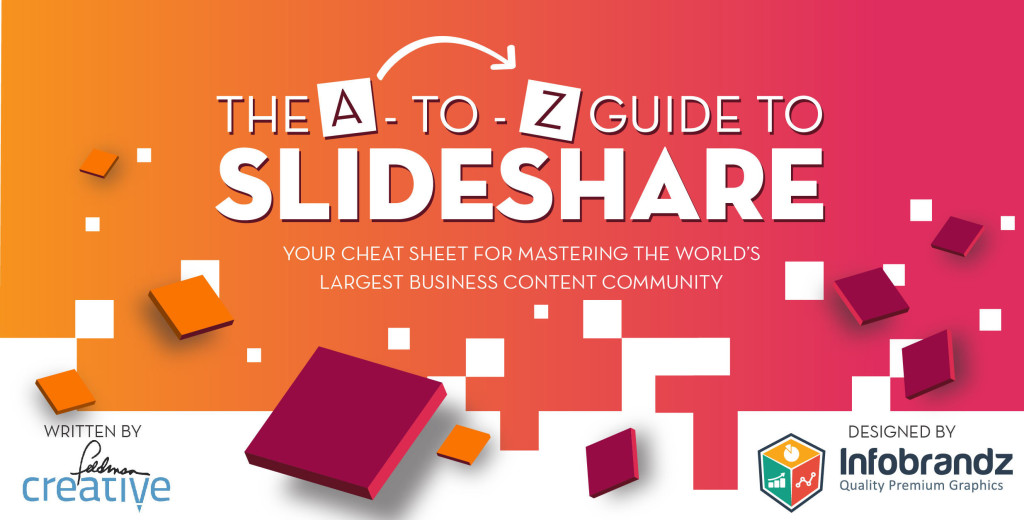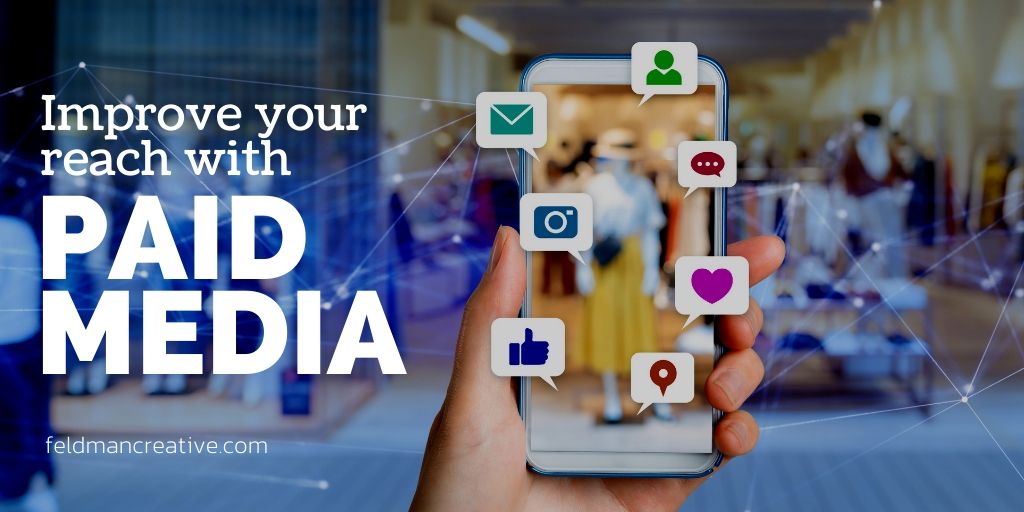There’s a greater than 4-to-1 chance you’re missing out on a gigantic opportunity to put your content in the path of your prospects.
See, according to the new Social Media Marketing Industry Report, 85% of marketers don’t use SlideShare. I’m going to tell you why you should consider getting started and in addition to this post, I’ll share with you a new infographic, “The A to Z Guide to SlideShare: Your Cheat Sheet for Mastering the World’s Largest Business Content Community.”
I suppose one could define a social media platform various ways. Like the seven networks outperforming it in terms of use, SlideShare is a site where you can publish and share content. However, unlike most of them, discussion and interaction between members is nearly non-existent.

SlideShare describes itself as a global hub of professional content. In this realm, it ranks alone at the top. Just as YouTube’s focus is to democratize video, SlideShare’s is to do the same for presentations. Unlike YouTube—and more like LinkedIn (which owns SlideShare)—SlideShare targets business users.
SlideShare’s audience is bigger than you might think, is terrific for lead generation, and is populated by people actively seeking information and resources (not dissimilar from a search engine, in that regard). And that audience is hungry for information. ~ Jay Baer, author of “Youtility”
SlideShare traffic is driven largely by search and social. Over 70% come via direct search. Traffic from business owners is 4X greater than Facebook. Traffic is truly global. More than 50% are from outside the U.S.
As you see from the traffic numbers in the image above (from “Introduction to SlideShare for Business”), its reach is enormous. Still, in consulting with B2B clients daily, I often find myself the first one to introduce them to SlideShare.
I explain, “SlideShare gets 60-million visits per month. Your website or blog does not. You should be on it.” (All credit goes to Todd Wheatland, author of “The Marketers Guide to SlideShare,” for that one.)
Now I’ve explained it to you too. So we’ll move on to…
Though you can post a variety of formats on SlideShare, unsurprisingly, slideshows rule. But many make a mess on the site with an old-fashioned approach to presentations.
My friend, Doug Kessler of Velocity Partners, who created one of the biggest hits SlideShare has ever seen, explains:
“The best SlideShare presentations were created for SlideShare. SlideShare is not where shitty presentations go to die. It’s a powerful, linear, visual storytelling medium in itself. Write stories in short chunks that make people keep clicking.”
Doug means if you create a graph-happy deck and sprinkle in flow charts, tables, callouts and starbursts, you have yourself a stinker. The formula success is to:
Tell a story — Your slides should “speak for themselves” and tell a story—much like a picture book. Use classic storytelling practices in a logical sequence with an obvious beginning, middle and end. Break longer works into chapters.
Keep it simple — Presentations are likely to be viewed quickly, often with limited screen space. Present your ideas in small bites using power words that pack a punch.
Make it beautiful — Successful presentations usually feature tasty graphics and design. Your first slide will be your click bait. Make it striking, professional and tastefully branded. Use powerful images, quality fonts and maintain a high degree of professionalism start to finish.
A number of presentations (and more) are featured on SlideShare’s home page each day. Though I have no way of knowing what percentage of visitors come by way of the home page, I’ve learned from experience when you’re featured there, views of your content take off far faster and multiply your chance for creating a big hit.
- Write a powerful headline
- Create an enticing cover slide
- Be well designed (they wrote that, not me)
- Keep us engaged through to the end
- Fully communicate your message
- Tackle a news-related or trending topic
- Be trend-setting in terms of design, style or content
I put some effort into creating a rocking cover slide for this presentation, which earned a spot on the home page and has got nearly 50K views to date.
Ideas for your content
Have some fun — Like any good content, you need to demonstrate you understand your audience’s challenges and deliver helpful advice, but it helps to make it entertaining. A sense of humor makes your content more memorable.
Take risks — Presentations stand out when they’re provocative, bold, even edgy.

Negative or contrarian titles, with some edge, often perform very well on SlideShare.
Be professional — If you lack writing or design talent, outsource to pros. If you want to create it yourself, secure the rights to strong photography, illustration and consider using professionally prepared templates.
Repurpose content — Mine your existing content and give it new life on SlideShare. A variety of content types (articles, eBooks, white papers, interviews, webinars, etc.) can be transformed into quality presentations for the SlideShare platform.
Show and tell — SlideShare lends itself nicely to mini case studies, testimonials, research findings and portfolio pieces.
Borrow authority — Highlight ideas from industry leaders to lend credibility to your presentations.
SlideShare created a “what to upload” page to help inspire ideas. The page features topics, formats and examples of each, including:
- How to guides, tutorials
- Travel features
- Quotes, inspirational quotes
- Trends
- Visual resumes
- Time management tips
- Sports features
- Photo collections
- Portfolios
- Investment advice
- Recipes
- Case studies
Note that while slideshows are the dominant content type, infographics are 4X more viral than presentations. Video doesn’t do well on its own, but video from YouTube can be added to slide decks, a very nice touch.
Optimize for search — SlideShare has very high domain authority, so if optimized correctly, your presentations may rank high on searches.
Within a day of publishing “The A-to-Z Guide to SlideShare” I found my presentation ranking on the first page of a Google search for “guide to SlideShare.” Notice how my keywords appear in the title, URL, and snippet.
Help your prospects find your content by including keywords, based on your search engine optimization strategy, in the titles, descriptions, and tags of your SlideShare content. Your work is converted into transcripts, which are included on your pages, which may also help with search.
Share and encourage sharing—Quality SlideShare content often spreads virally through blogs and social networks.
- When you share via the social media options offered your slideshows will be pictured in timelines and in some cases, embedded.
- You can also send your content via email as attachments or links.
- Embed code is provided so you can embed your content on WordPress blogs.
- Grabbing embeddable code is an option for your viewers too, so you’ll find when you publish great content, it often appears on numerous websites.
Use SlideShare to generate traffic and leads. Remember, SlideShare users are usually doing research. Most arrive via search. Lead them to your website and/or find out who they are. Try any or all of the following tactics:
Include links — To generate traffic to your site, media outlets and landing pages, create links in your presentations. Design links as buttons to make it your call to actions obvious and clear and consider using arrows or “click here” instructions.
Provide contact information — In addition to buttons, include URLs and contact information at the end of your presentation. (If you allow, users have the option to download your content, so it may be accessed later.)
Promote your site — Include your URL on your profile page on in the descriptions of your presentations.
Insert a form — The option to include lead forms was once offered only via paid memberships. Today, all features are free.
You can insert customizable forms at various places in your presentation. Forms are customizable, so you can create fields and/or questions to better qualify leads. LinkedIn members can respond fast with an auto-fill feature.
If you like, you can even require viewers to complete the form in order to continue reading your presentation or to download it. (However, that can be annoying.)

Most of my forms come prior to the final slide aiming to collect new subscribers to my email list.
Are you in?
Trust me, if you’re a serious content marketer you don’t want to be among the 85% that hold out from getting involved with SlideShare. The community presents an ideal place to incorporate a visual element into your content marketing.
At present, SlideShare is 100% free. Tune into what works on SlideShare. Try following the advice I’ve given you here to attract viewers to your content, expand your online reach and realize new opportunities to generate leads.
Note: A version of post was written for the KISSmetrics blog (which you should subscribe to). Special thanks to my partners at www.Infobrandz.com for their amazing work on the infographic. Please share this post.







![Multiplying the Effectiveness of Your Infographics [Infographic] Multiplying the Effectiveness of Your Infographics [Infographic]](https://feldmancreative.com/wp-content/uploads/2019/07/Screen-Shot-2019-07-26-at-10.06.13-AM.png)

Comments
Sue-Ann
Barry…here you go again…clogging up my Evernote file with more mega-useful info! I’m already on it…developing and creating away! I love reading your work and your brilliance is enlightening to me on a regular basis! Thanks for all your fabulous efforts. I’m still beaming from all the invaluable insights you shared on Kathryn Aragon’s recent Area 51 webinar so thank you for that once again as well:) Take care. Sue-Ann xoxoxoxo
Barry Feldman
Hey Sue-Ann,
Nice of you to say all that. ‘Twas a pleasure doing Kathryn’s program. Good to know you.
Paul Gibler
Hello Barry,
This is a very interesting infographic. I couldn’t get it to work without making some modifications like adding width in pixels and changing the ‘ symbol. I’ll write a blog post in the future with the infographic.
Paul Gibler
a.k.a the Web Chef
Barry Feldman
Paul,
Yeah, I see the dimensions are missing from the code. I must have done something wrong. Thanks for the heads-up. If you’re good with the size here, feel free to copy the graphic. I look forward to your SlideShare post. Thanks for sharing the graphic and commenting here.
100 Ways Your Company Loses to Better Online Marketers | Feldman Creative
[…] The A-to-Z Guide to SlideShare [Infographic] […]